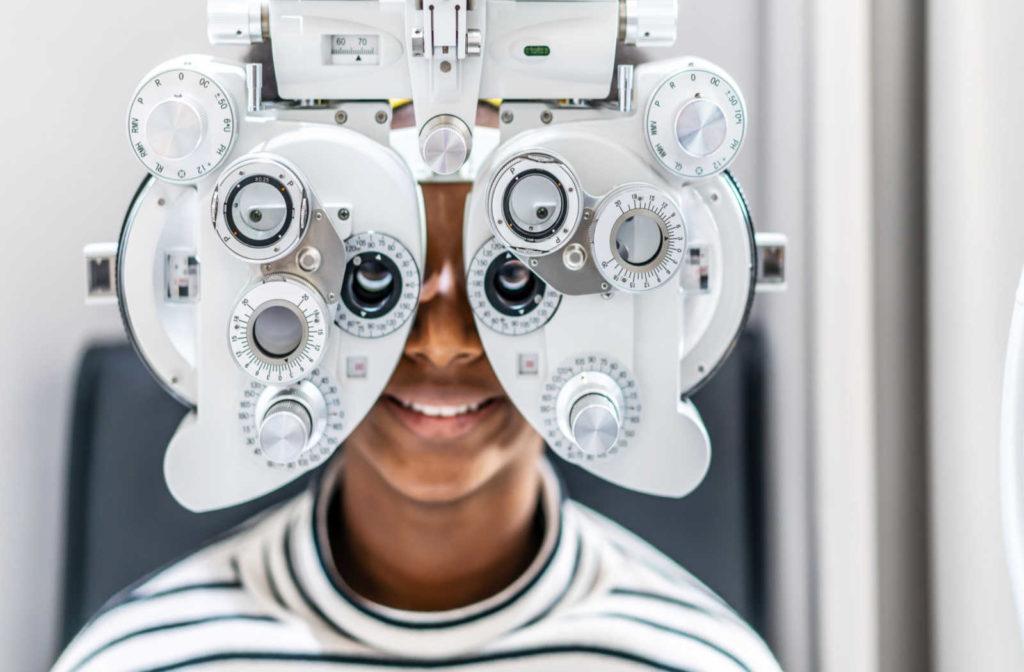Just How an Eye Doctor Can Change Your Vision Health in Chino
Just How an Eye Doctor Can Change Your Vision Health in Chino
Blog Article
Exploring the Latest Technical Advancements in Optometry and What They Mean for Optometrists
In the ever-evolving field of optometry, current technical improvements are improving how practitioners come close to eye care. From the precision of Optical Coherence Tomography to the nuanced understandings provided by AI-driven analysis tools, these innovations are setting new criteria in patient analysis and therapy. Teleoptometry is positioned to redefine accessibility, making certain that knowledge transcends geographical restrictions. As these developments penetrate the practice, optometrists are confronted with the challenge of embracing these devices to enhance patient outcomes. Yet, the inquiry continues to be: how will these technological shifts redefine the roles and duties within the career?
Developments in Diagnostic Tools
Advancing the area of optometry, developments in diagnostic devices have actually transformed the means eye treatment experts analyze and detect eye problems and aesthetic disabilities. The previous years has actually observed considerable technical developments, enabling even more thorough and exact assessments. Optical Coherence Tomography (OCT), for instance, supplies high-resolution cross-sectional photos of the retina, permitting the very early detection of illness such as glaucoma and age-related macular deterioration. This non-invasive imaging strategy has come to be vital in modern optometric practice.
An additional key development is the intro of sophisticated corneal topography systems, which map the surface area curvature of the cornea with precision. These tools are particularly valuable for fitting call lenses and diagnosing corneal disorders. Furthermore, digital retinal imaging has transformed conventional ophthalmoscopy, using comprehensive, scenic sights of the retina that help with thorough aesthetic exams.
The advancement of wavefront aberrometry has likewise been crucial, making it possible for the analysis of refractive mistakes with unparalleled precision (Opticore Optometry). This innovation aids in personalizing restorative lenses and improving medical end results for refractive surgical treatments. Jointly, these diagnostic innovations encourage eye doctors to deliver exceptional client care, ensuring very early treatment and tailored treatment techniques, inevitably boosting visual health end results
AI in Individual Administration
Building on the foundation of advanced analysis tools, the unification of synthetic intelligence (AI) in individual management represents a transformative leap for optometry. AI systems are significantly utilized to boost performance, accuracy, and customization in person treatment.
Moreover, AI-driven platforms promote streamlined patient communications and administrative procedures. Automated scheduling, digital appointments, and personalized follow-up plans not only improve person complete satisfaction but additionally maximize time monitoring for specialists. These systems can triage patients based upon the necessity of their conditions, ensuring that those in vital need get timely interest.
Furthermore, AI boosts decision-making by providing eye doctors with evidence-based referrals and therapy paths. By integrating information from electronic wellness documents, AI devices use insights that inform medical decisions, minimizing the risk of errors and boosting patient end results. As AI remains to develop, its role in patient management will likely broaden, reshaping the landscape of optometric care.
Advancements in Retinal Imaging
In the world of optometry, retinal imaging has seen exceptional technical innovations that are enhancing diagnostic capacities and client care. Innovations such as Optical Comprehensibility Tomography (OCT) and fundus digital photography have actually revolutionized just how optometrists envision and evaluate the retina. OCT, in specific, offers high-resolution, cross-sectional photos of the retina, permitting the comprehensive assessment of its layers. This ability is invaluable for early detection and administration of conditions like glaucoma, diabetic person retinopathy, and age-related macular degeneration.
Enhanced imaging methods like OCT angiography are more refining analysis accuracy. This non-invasive strategy maps blood flow in the retina, supplying vital understandings right into vascular health without the demand for color shots. Additionally, adaptive optics modern technology is being integrated into retinal imaging systems to correct ocular aberrations, delivering unprecedented image clearness. Such innovations assist in the recognition of min retinal adjustments that can indicate disease development.
Moreover, developments in fabricated intelligence are enhancing retinal imaging by allowing automated analysis of huge datasets. These systems assist optometrists in recognizing patterns a sign of pathology, therefore improving diagnostic accuracy and performance. Collectively, these developments are changing retinal imaging into a keystone of contemporary eye care, improving results and broadening healing opportunities.
Teleoptometry's Expanding Function
Teleoptometry is increasingly coming to be a crucial component of eye care, driven by improvements in digital interaction and analysis devices. This is particularly beneficial in country and underserved click now areas where accessibility to specialized eye care is frequently minimal.
The integration of expert system (AI) additional enhances teleoptometry, allowing the analysis of aesthetic data and assisting in the detection of eye conditions such as glaucoma and diabetic person retinopathy. AI-powered algorithms can rapidly translate complex imaging data, supplying eye doctors with important understandings that reinforce scientific decision-making.
Furthermore, teleoptometry sustains continuity of treatment through smooth integration with electronic wellness records (EHRs), permitting optometrists to preserve detailed person backgrounds. This ensures that people get customized and consistent care even when speaking with various specialists.
Regardless of these benefits, difficulties continue to be, including guaranteeing data protection and taking care of client expectations. Teleoptometry stands for a significant stride towards even more obtainable, effective, and patient-centered eye treatment. As innovation develops, its function is positioned to increase even more.

Future Fads in Eye Treatment
A myriad of innovative fads is readied to reshape the future of eye care, driven by technical developments and the progressing needs of individuals. One significant pattern is the assimilation of artificial intelligence (AI) in diagnostics, which promises to enhance the accuracy and performance of eye evaluations. AI formulas can examine vast amounts link of data from retinal photos, possibly discovering problems like diabetic retinopathy and glaucoma earlier than traditional techniques.
Furthermore, individualized medication is acquiring grip in optometry, with hereditary testing informing tailored treatment strategies. This strategy intends to optimize individual outcomes by customizing treatments to individual genetic accounts. Wearable modern technology, such as wise get in touch with lenses, is also on the perspective, offering real-time tracking of intraocular pressure or glucose degrees, thus supplying constant understandings into systemic and eye wellness.
The fostering of augmented fact (AR) and virtual fact (VR) in training and individual education and learning is another arising trend. These modern technologies offer immersive experiences that can boost understanding and skills both for optometrists and patients. As these patterns advance, optometrists need to stay abreast of technical improvements to offer innovative treatment, guaranteeing better individual results and satisfaction in the vibrant landscape of eye treatment.
Verdict

Collectively, these analysis improvements empower optometrists to deliver remarkable individual care, making certain early intervention and tailored therapy approaches, ultimately boosting visual wellness end results.

As these technologies proceed to advance, optometrists should adapt and integrate them right into practice, eventually enhancing process effectiveness and elevating the requirement of eye treatment provided to clients.
Report this page